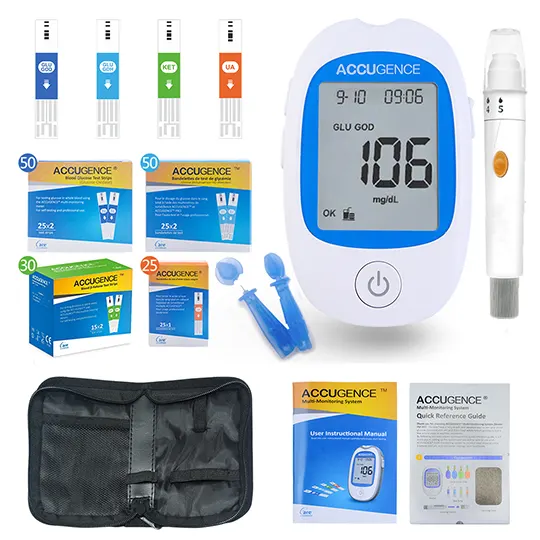Dosing and uses of Celebrex (celecoxib)
Adult dosage forms and strengths
capsule
- 50mg
- 100mg
- 200mg
- 400mg
Acute Pain & Primary Dysmenorrhea
400 mg PO initially, then 200 mg PRN on first day; 200 mg q12hr PRN on subsequent days
Ankylosing Spondylitis
200 mg PO once daily or divided q12hr; if no effect after 6 weeks, may increase to 400 mg/day; if no adequate resonse observed after 6 weeks of taking 400 mg/day consider discontinuing therapy
Osteoarthritis
200 mg PO once daily or divided q12hr
Rheumatoid Arthritis
100-200 mg PO q12hr
Familial Adenomatous Polyposis (Off-label)
400 mg PO q12hr, taken with food
Usual medical care should be continued during celecoxib therapy
Dosing Modifications
Hepatic impairment
- Moderate (Child-Pugh class B): Decrease dose by 50%
- Severe (Child-Pugh class C): Not recommended
Renal impairment
- Relative contraindication to use
Pediatric dosage forms and strengths
capsule
- 50mg
- 100mg
- 200mg
- 400mg
Juvenile Rheumatoid Arthritis
<2 years: Safety and efficacy not established
>2 years and 10-25 kg: 50 mg PO q12hr
>2 years and >25 kg: 100 mg PO q12hr
Consider alternative management in patients who are poor CYP2C9 metabolizers
Dose Modifications
Poor CYP2C9 Metabolizers
- May consider reducing the initial dose by 50%; consider alternative therapy in patients that are poor CYP2C9 metabolizers
Celebrex (celecoxib) adverse (side) effects
>10%
Headache (10-16%)
Hypertension (13%)
1-10%
Fever (9%)
Dyspepsia (8.8%)
Upper respiratory tract infection (8.1%)
Arthralgia (7%)
Cough (7%)
Vomiting (6%)
Diarrhea (5.6%)
Gastroesophageal reflux (5%)
Sinusitis (5%)
Abdominal pain (4.1%)
Nausea (3.5%)
Back pain (2.8%)
Insomnia (2.3%)
Pharyngitis (2.3%)
Flatulence (2.2%)
Rash (2.2%)
Dizziness (2%)
Peripheral edema (2%)
<1%
Anemia
Erythema multiforme
Exfoliative dermatitis
Hepatitis
Jaundice
Stevens-Johnson syndrome
Toxic epidermal necrolysis
Frequency not defined
Increased serum asparate aminotransferase concentration
Warnings
Black box warnings
Cardiovascular risk
- Nonsteroidal anti-inflammatory drugs (NSAIDs) may increase risk of serious cardiovascular thrombotic events, myocardial infarction (MI), and stroke, which can be fatal
- Risk may increase with duration of use
- Patients with existing cardiovascular disease or risk factors for such disease may be at greater risk
- NSAIDs are contraindicated for perioperative pain in setting of coronary artery bypass graft (CABG) surgery
Gastrointestinal risk
- NSAIDs increase risk of serious gastrointestinal (GI) adverse events, including bleeding, ulceration, and gastric or intestinal perforation, which can be fatal
- GI adverse events may occur at any time during use and without warning symptoms
- Elderly patients are at greater risk for serious GI events
Contraindications
Aspirin allergy, chronic hepatitis, perioperative pain resulting from coronary artery bypass graft surgery
Cautions
Congestive heart failure, hypertension
Increased risk of adverse cardiovascular events and skin reactions
Caution in asthma (bronchial), bleeding disorder, bronchospasm, duodenal/gastric/peptic ulcer, renal impairment
Risk of GI bleeding, ulceration, and perforation
Long-term administration of NSAIDs may result in renal papillary necrosis and other renal injury; patients at greatest risk include elderly individuals; those with impaired renal function, hypovolemia, heart failure, liver dysfunction, or salt depletion, and those taking diuretics, angiotensin-converting enzyme inhibitors, or angiotensin-receptor blockers
Anemia may occur; monitor hemoglobin or hematorcrit in long term treatment patients
Heart Failure(HF) risk
- NSAIDS have the potential to trigger HF by prostaglandin inhibition that leads to sodium and water retention, increased systemic vascular resistance, and blunted response to diuretics
- NSAIDS should be avoided or withdrawn whenever possible
- AHA/ACC Heart Failure Guidelines; Circulation. 2016; 134
Pregnancy and lactation
Pregnancy category: C; D at ≥30 weeks' gestation (may cause premature closure of ductus arteriosus)
Quebec Pregnancy Registry identified 4705 women who had spontaneous abortions by 20 weeks' gestation; each case was matched to 10 control subjects (n=47,050) who had not had spontaneous abortions; exposure to nonaspirin NSAIDs during pregnancy was documented in ~7.5% of cases of spontaneous abortions and in ~2.6% of controls
Lactation: Drug enters breast milk; use caution
Pregnancy categories
A: Generally acceptable. Controlled studies in pregnant women show no evidence of fetal risk.
B: May be acceptable. Either animal studies show no risk but human studies not available or animal studies showed minor risks and human studies done and showed no risk.
C: Use with caution if benefits outweigh risks. Animal studies show risk and human studies not available or neither animal nor human studies done.
D: Use in LIFE-THREATENING emergencies when no safer drug available. Positive evidence of human fetal risk.
X: Do not use in pregnancy. Risks involved outweigh potential benefits. Safer alternatives exist.
NA: Information not available.
Pharmacology of Celebrex (celecoxib)
Mechanism of action
Inhibits cyclooxygenase (COX)-2; does not affect COX-1 (at therapeutic concentrations), thereby decreasing formation of prostaglandin synthesis
Absorption
Bioavailability: Undetermined
Peak plasma time: ≤3 hr
Peak plasma concentration: 705 ng/mL
Distribution
Protein bound: 97% (principally to albumin; to a lesser extent, to alpha1-acid glycoprotein)
Vd: 400 L
Metabolism
Metabolized in liver by CYP2C9
Metabolites: Carboxylic acid (SC-62807), glucuronide
Enzymes inhibited: COX-2
Elimination
Half-life: Mild hepatic impairment, 11 hr; chronic renal insufficiency or moderate hepatic impairment, 13.1 hr
Dialyzable: Undetermined
Clearance: 500 mL/min
Excretion: Feces (57%), urine (27%)


